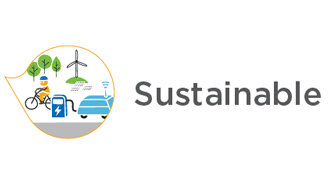Resilience by design
 Better Placed: Better Performance |  Future Transport: Sustainable |
Environmental sustainability and resilience are no longer optional but fundamental aspects of functional, whole-of-life design.
We can minimise resource consumption (energy, water, materials) by responding to local climate conditions using efficient passive approaches to provide shade, shelter, heating, and cooling.
Good design can prioritise the use of robust, locally sourced materials and resilient, climate responsive plant species. Resource efficiency includes minimising consumption of land – streets need to be ‘hard working’, accommodating more people efficiently as well as making room for place, and the vibrancy that comes from proximity. Inclusive zoning can allow complementary uses to cluster together, with appropriate density and housing diversity. Resilience can be low tech – for example using local materials or low albedo surfaces to reduce emissions and urban heat respectively.
Resilience includes social resilience – delivering local community facilities that enable people to come together both regularly or in times of crisis, and street space that can be used temporally to host social events such as weekly markets or seasonal concerts. Like all good projects, this requires a combination of physical infrastructure (space to host the activity), governance (to enable that activity) and regular funding (to sustain that activity).
Key questions
- Is the design resilient – does it minimise resource consumption and emissions, and contribute to the NSW net zero emissions goal? Could an 8-year-old use this area independently (community resilience)?
- Does the project contribute to a permeable, compact and connected urban environment?
- Are sustainable modes incorporated into the project?
- Is there flexibility in design so various uses of a place or space can occur over a day, week or year?